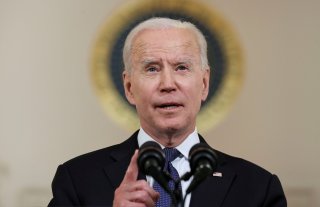Child Tax Credit Stimulus Checks: A One-Year Social Welfare Program?
The advance payment of the tax credit has been controversial in some circles and it has been compared to a “universal basic income” entitlement program that would disincentivize work.
The first monthly checks of 2021’s Child Tax Credit were sent out yesterday, targeted towards middle-class households with children. All told, roughly 36 million families will receive payments, according to the IRS. The agency has been granted $110 billion to use for this purpose.
The March 2021 American Rescue Plan Act (ARPA), which provided for the advance payments, also substantially increased the amount paid out. In 2019 and 2020, before and during the onset of the pandemic, the annual payment was $2000 per child per year. The ARPA increased this level to $3000 per year for children aged six and older, and $3600 for children under six. Half of the payment will be sent out as advance checks, either $250 or $300 per month depending on the age of the child. The remaining half can be claimed as a tax rebate when it comes time to file a family’s 2021 taxes.
The advance payment of the tax credit has been controversial in some circles. Fiscal conservatives, for instance, have objected to it—less to the increase than to the ARPA’s decision to make the payment fully refundable, meaning that families can receive it as cash rather than simply as a deduction from their taxes.
In a statement, Republican Sens. Marco Rubio (R-FL) and Mike Lee (R-UT) criticized the changes made to the Child Tax Credit, comparing it to a “universal basic income” entitlement program that would disincentivize work.
Yet the program is popular in other areas. It has bee favorably compared to other large-scale spending programs, such as Social Security, Medicare, and the Affordable Care Act—each of which, however imperfectly, addressed a crucial issue facing millions of Americans.
Under President Biden, the Child Tax Credit’s defenders have argued that it fulfills a similar need: middle-class American families could use direct payments to offset the rising costs of childcare. The Child Tax Credit is larger than other welfare benefits, such as food stamps, and the direct payment of cash gives families greater flexibility in how the money is used.
The only thing that separates the increased Child Tax Credit from other major assistance programs is its brevity; after 2021, the credit is set to shrink to its normal level of $2000 per year. Some Democrats have objected to this—and Biden has previously supported its extension at its current level until 2025. Whether this will actually happen, though, depends a great deal on the House and Senate—and who controls each chamber following the 2022 elections.
Trevor Filseth is a current and foreign affairs writer for The National Interest.
Image: Reuters

